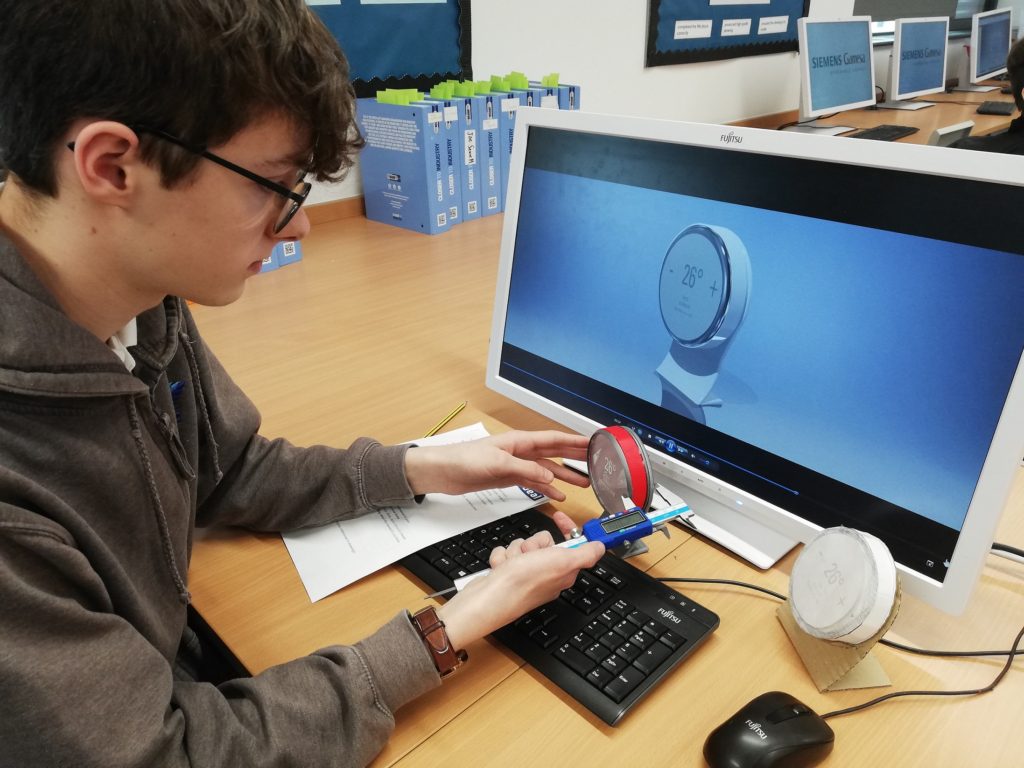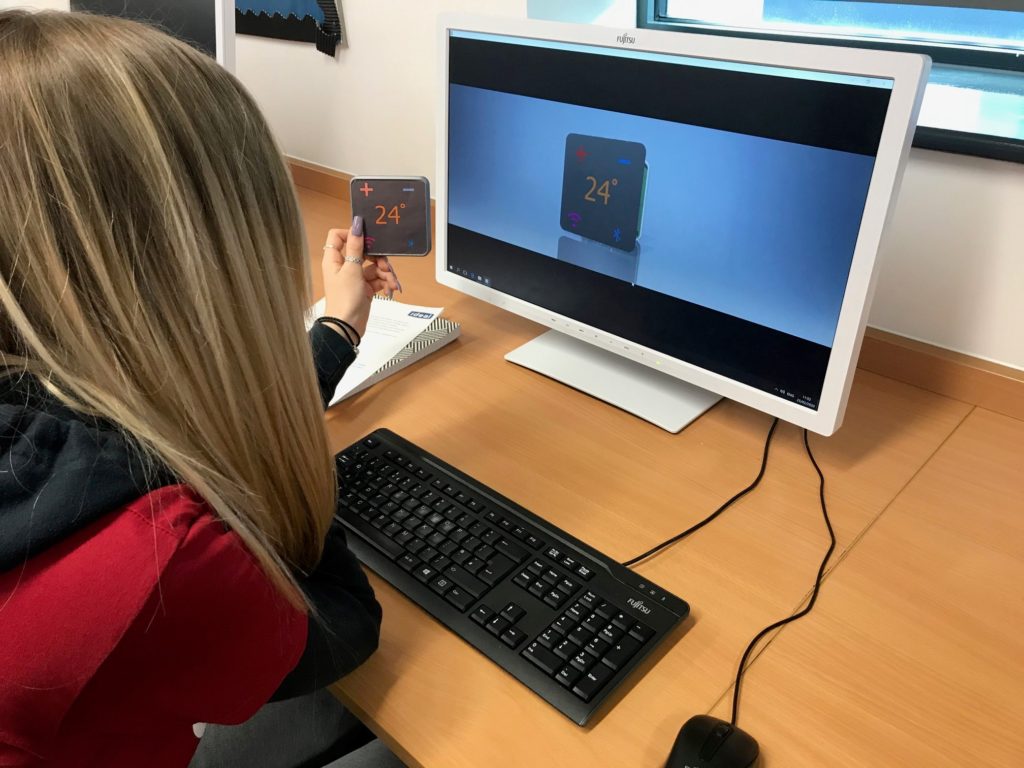Our Engineering Design students at have created their own versions of smart thermostats in a project set by leading experts in the heating industry, Ideal Boilers.
The brief, set by the Research & Development and Internet of Things teams at Ideal Boilers, challenged Year 11 students to research the innovative product and the current variations on the market. They then had to design and prototype their own smart thermostats, using digital technology and 3D printing techniques.
Following the entire design process, they drew 2D sketches and created cardboard prototypes before generating digital 3D models using the skills required by engineers employed by Ideal Boilers, one of the school’s Major Partners.
40 Year 11 students completed the project as part of their OCR National qualification. It was so successful that it is now being repeated with 60 Year 10 students.

Glenn Jensen, our Head of Engineering and Employer Projects, said: “The students’ 3D work is absolutely fantastic. It’s very unusual for students of this age to use software like this and they have really enjoyed it.
“It’s a breath of fresh air to have a project which follows industry, step by step, and goes through the same problem-solving and thought processes that you would find in a design department.
“The backing from Ideal Boilers has been excellent in terms of supplying the brief, which gets the students thinking about sustainability and design, enabling them to live that process and communicate it professionally to people in industry.”
Glenn said the students had to carry out thorough research for the project and check it against the brief, creating the prototype before final production. Manufacturing, sustainability and materials were also carefully considered in the design process, particularly from an environmental perspective.
Glenn said: “The plastic they’ve used to create their designs using the 3D printers is 100% recyclable and biodegradable and any scrap is recycled into fresh materials. The importance of sustainability is really important to us at Ron Dearing UTC and our students are very environmentally aware.”
The 3D designs, including the thermostat casing and shell, were created using 3D printers from Hull-based digital design and fabrication experts NFire Labs Limited, based at C4DI , Hull’s innovative Digital Tech Hub.
Ideal Boilers, which has more than 100 years’ innovation and experience in the heating industry, also works with local companies to create global products, including leading C4DI-based software company, Sauce. Sauce is the tech partner that designed the software behind Ideal Boilers’ smart heating systems.
Dr Elaine Lancaster, Chief Technical Officer at Ideal Boilers, based in National Avenue, west Hull, said: “As we grow and expand in the digital technology sector for future products, projects like this really help students to understand the type of technology we may be looking for in the future and it is a pathway for student development.
“It has been wonderful to hear how engaged the students have been. This experience will make them more equipped for jobs and this is how we can create ready-made engineers of the future.”
Year 11 student Kelham Hillier, 16, who completed the project, said: “It taught me a lot about how I can improve the way I think about design and I really enjoyed it. I definitely think this is a path I could take in the future.”

Fellow student Amy Rickles, 16, added: “I gained a lot of computer-aided design (CAD) skills and found out how to create engineering drawings linked to design ideas and thermostat shapes. I would like to be an engineer and design buildings. Doing a project like this gives me ideas for the future and the type of software I could use.”